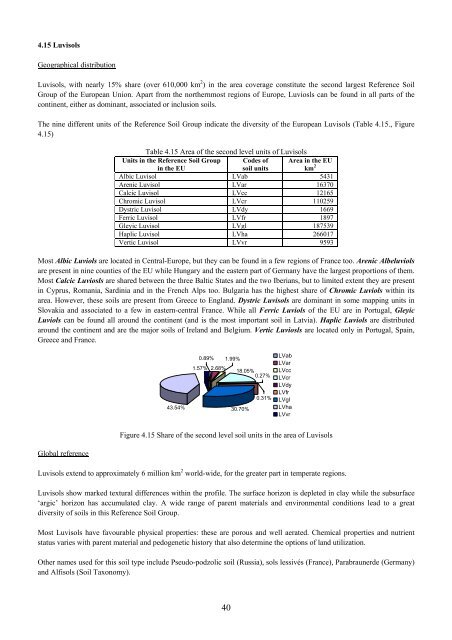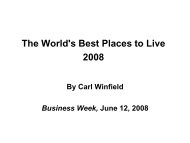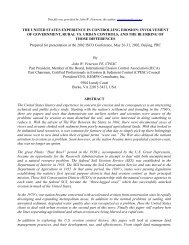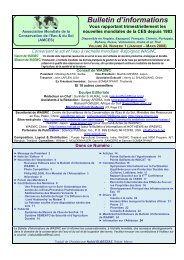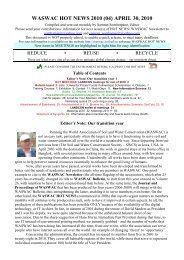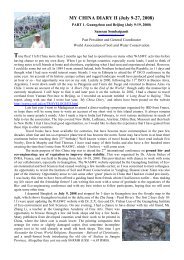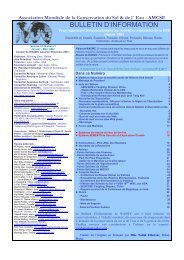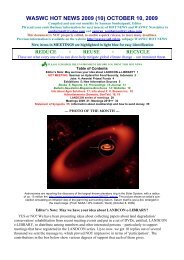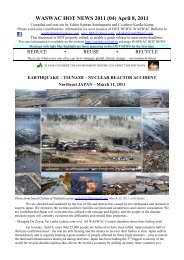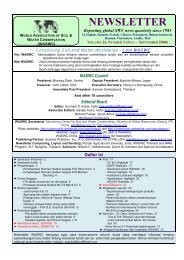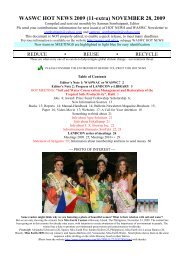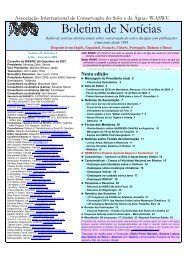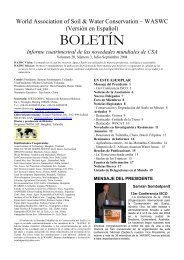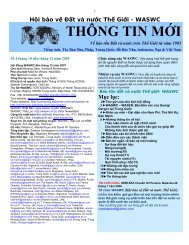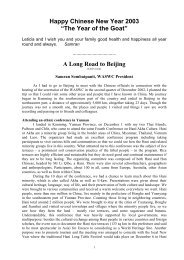Soils of the European Union - European Soil Portal - Europa
Soils of the European Union - European Soil Portal - Europa
Soils of the European Union - European Soil Portal - Europa
Create successful ePaper yourself
Turn your PDF publications into a flip-book with our unique Google optimized e-Paper software.
4.15 LuvisolsGeographical distributionLuvisols, with nearly 15% share (over 610,000 km 2 ) in <strong>the</strong> area coverage constitute <strong>the</strong> second largest Reference <strong>Soil</strong>Group <strong>of</strong> <strong>the</strong> <strong>European</strong> <strong>Union</strong>. Apart from <strong>the</strong> nor<strong>the</strong>rnmost regions <strong>of</strong> Europe, Luviosls can be found in all parts <strong>of</strong> <strong>the</strong>continent, ei<strong>the</strong>r as dominant, associated or inclusion soils.The nine different units <strong>of</strong> <strong>the</strong> Reference <strong>Soil</strong> Group indicate <strong>the</strong> diversity <strong>of</strong> <strong>the</strong> <strong>European</strong> Luvisols (Table 4.15., Figure4.15)Table 4.15 Area <strong>of</strong> <strong>the</strong> second level units <strong>of</strong> LuvisolsUnits in <strong>the</strong> Reference <strong>Soil</strong> Groupin <strong>the</strong> EUCodes <strong>of</strong>soil unitsArea in <strong>the</strong> EUkm 2Albic Luvisol LVab 5431Arenic Luvisol LVar 16370Calcic Luvisol LVcc 12165Chromic Luvisol LVcr 110259Dystric Luvisol LVdy 1669Ferric Luvisol LVfr 1897Gleyic Luvisol LVgl 187539Haplic Luvisol LVha 266017Vertic Luvisol LVvr 9593Most Albic Luviols are located in Central-Europe, but <strong>the</strong>y can be found in a few regions <strong>of</strong> France too. Arenic Albeluviolsare present in nine counties <strong>of</strong> <strong>the</strong> EU while Hungary and <strong>the</strong> eastern part <strong>of</strong> Germany have <strong>the</strong> largest proportions <strong>of</strong> <strong>the</strong>m.Most Calcic Luviosls are shared between <strong>the</strong> three Baltic States and <strong>the</strong> two Iberians, but to limited extent <strong>the</strong>y are presentin Cyprus, Romania, Sardinia and in <strong>the</strong> French Alps too. Bulgaria has <strong>the</strong> highest share <strong>of</strong> Chromic Luviols within itsarea. However, <strong>the</strong>se soils are present from Greece to England. Dystric Luvisols are dominant in some mapping units inSlovakia and associated to a few in eastern-central France. While all Ferric Luviols <strong>of</strong> <strong>the</strong> EU are in Portugal, GleyicLuviols can be found all around <strong>the</strong> continent (and is <strong>the</strong> most important soil in Latvia). Haplic Luviols are distributedaround <strong>the</strong> continent and are <strong>the</strong> major soils <strong>of</strong> Ireland and Belgium. Vertic Luviosls are located only in Portugal, Spain,Greece and France.0.89% 1.99%1.57% 2.68%18.05%0.27%43.54% 30.70%0.31%LVabLVarLVccLVcrLVdyLVfrLVglLVhaLVvrFigure 4.15 Share <strong>of</strong> <strong>the</strong> second level soil units in <strong>the</strong> area <strong>of</strong> LuvisolsGlobal referenceLuvisols extend to approximately 6 million km 2 world-wide, for <strong>the</strong> greater part in temperate regions.Luvisols show marked textural differences within <strong>the</strong> pr<strong>of</strong>ile. The surface horizon is depleted in clay while <strong>the</strong> subsurface‘argic’ horizon has accumulated clay. A wide range <strong>of</strong> parent materials and environmental conditions lead to a greatdiversity <strong>of</strong> soils in this Reference <strong>Soil</strong> Group.Most Luvisols have favourable physical properties: <strong>the</strong>se are porous and well aerated. Chemical properties and nutrientstatus varies with parent material and pedogenetic history that also determine <strong>the</strong> options <strong>of</strong> land utilization.O<strong>the</strong>r names used for this soil type include Pseudo-podzolic soil (Russia), sols lessivés (France), Parabraunerde (Germany)and Alfisols (<strong>Soil</strong> Taxonomy).40


